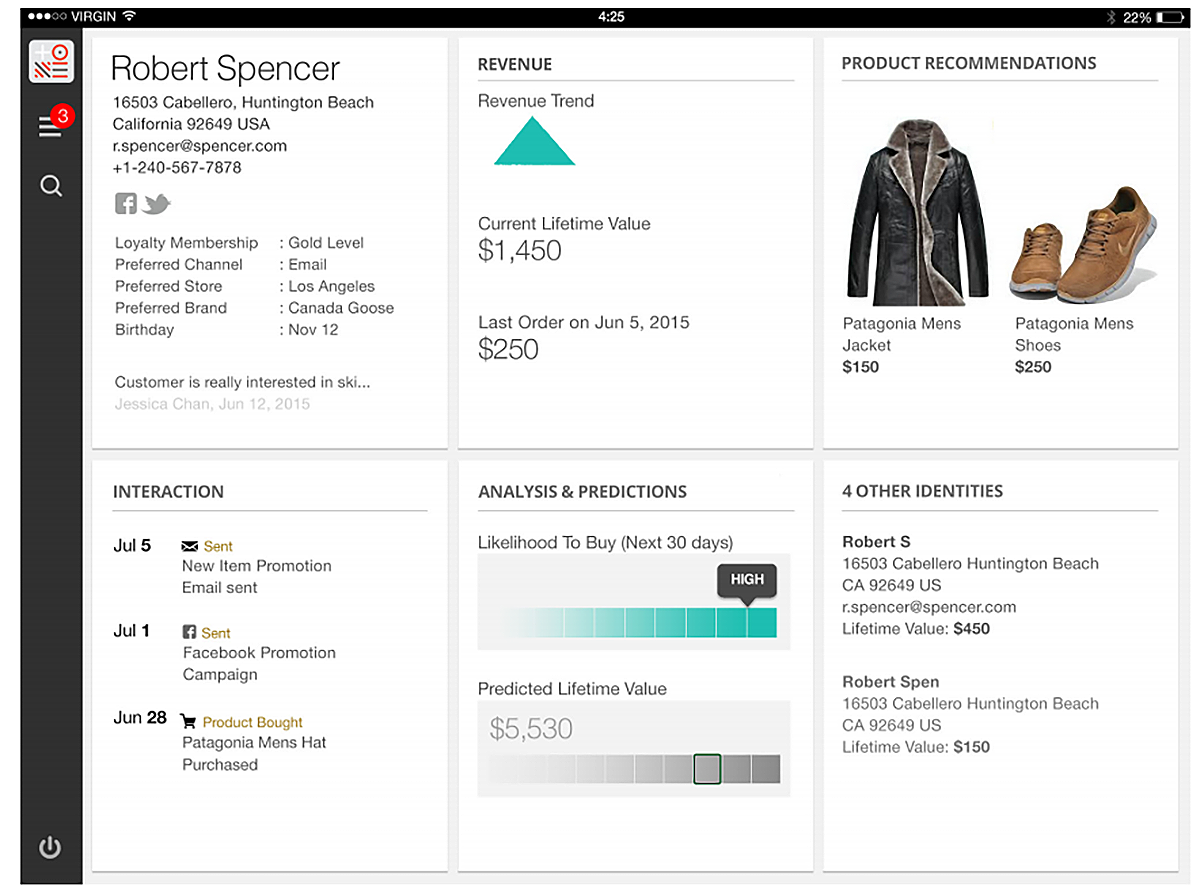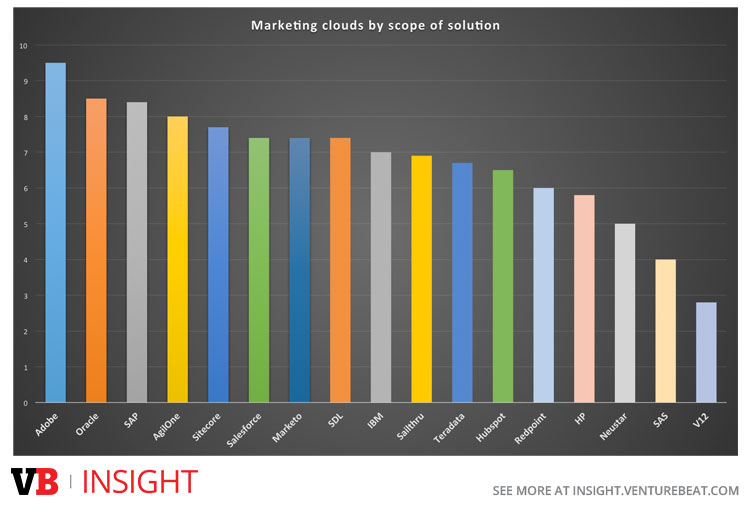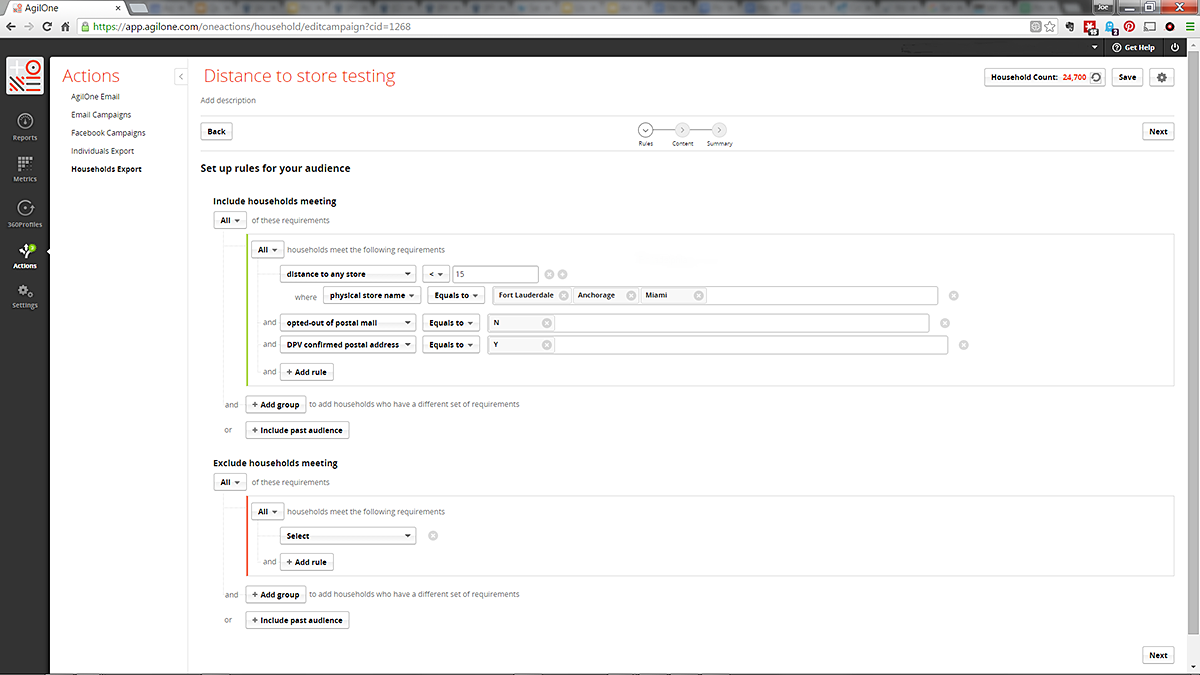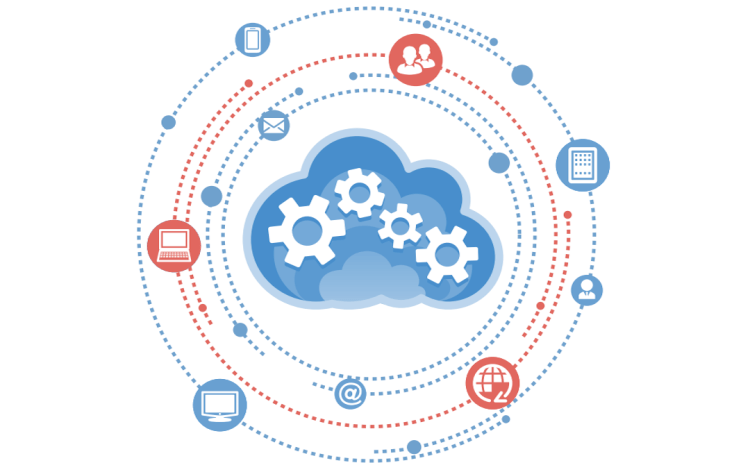AgilOne, a vendor competing with the likes of Salesforce, Adobe, and Oracle in the Marketing Cloud space, is announcing several new features. Most interesting of these is the capability to predict future customer lifetime value (LTV) across channels.
Predictive capabilities are getting hotter in both the B2B and B2C worlds, as vendors compete to meet the need for better personalization and targeting capabilities. However, many vendors rely on data from a single channel to accomplish this, whereas AgilOne uses data from across channels. AgilOne is able to make predictions based on a broader dataset that includes both on- and off-line data.
The company says this process of “supervised learning” starts with over 100 primary variables from across channels, including orders in the past 100 days, recent email open rate, click ratio, and average order value. Using statistical analysis, customers can then be segmented in many ways, including by predicted LTV (pLTV).

Above: Screenshot of predicted LTV. Source: AgilOne
Currently, many online retailers — a key customer segment for AgilOne — segment and target customers based on purchase history. While historical purchase data can be one good indicator of possible future value, it does not paint a complete picture.
The comprehensive data needed to paint that picture is at the forefront of AgilOne’s approach to its marketing cloud platform. In VB Insight’s report on Marketing Clouds, author John Koetsier found that “The solution that AgilOne has built does not have its roots in a marketing automation system, or CRM, or legacy IT. Instead, AgilOne started with a data platform.”

To further enhance its predictive capabilities, AgilOne has announced two updates: Householding and Distance-to-store.
Householding is, in a way, similar to account-based marketing (ABM). For those unfamiliar, ABM is a newer B2B marketing approach that aims to understand a company as a whole, comprised of various individuals that make decisions collectively. Similarly, this new feature provides consumer insight at the household level, as the household decision (and budget) for certain categories of purchases may be split between different family members.
Distance-to-store enables marketers to view and segment customers based on address or current location. Location can be used to segment customers by their distance to a specific nearby physical storefront, for example, or to help businesses determine where to open a new store.

Above: Screenshot of Distance-to-store. Source: AgilOne
Marketers overwhelmed by marketing technology choices are looking for a consolidated solution, and with only a few “name-brand” players in the marketing cloud space, it’s critical for AgilOne to set itself apart. The company was named an “innovation leader” in the Marketing Cloud report, but it’s too early to tell who will win.



